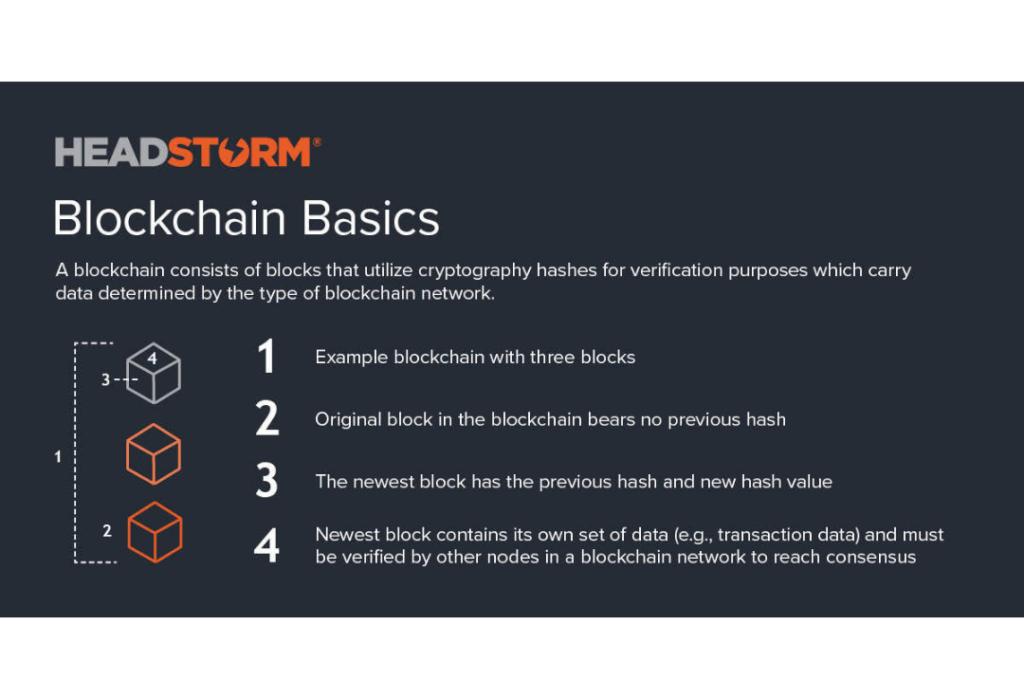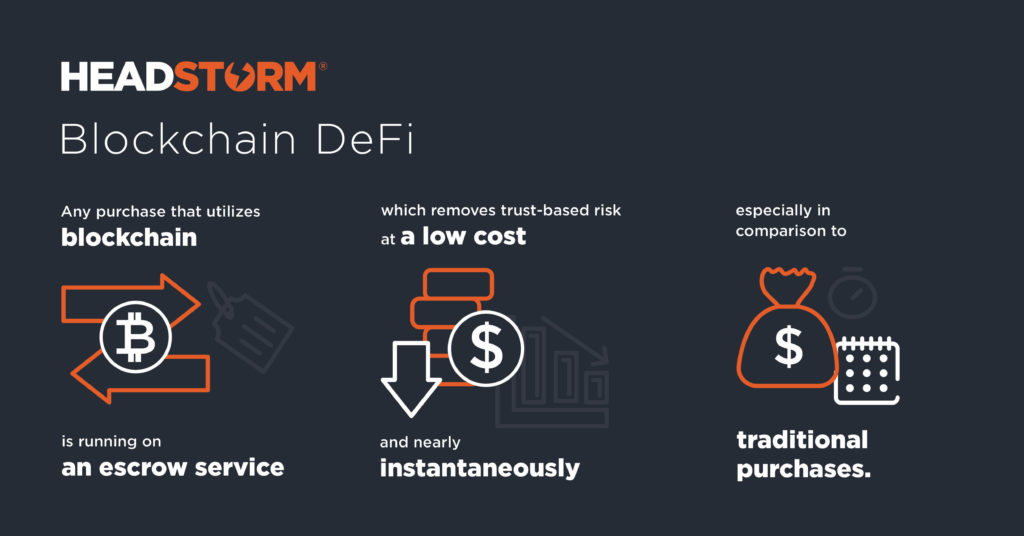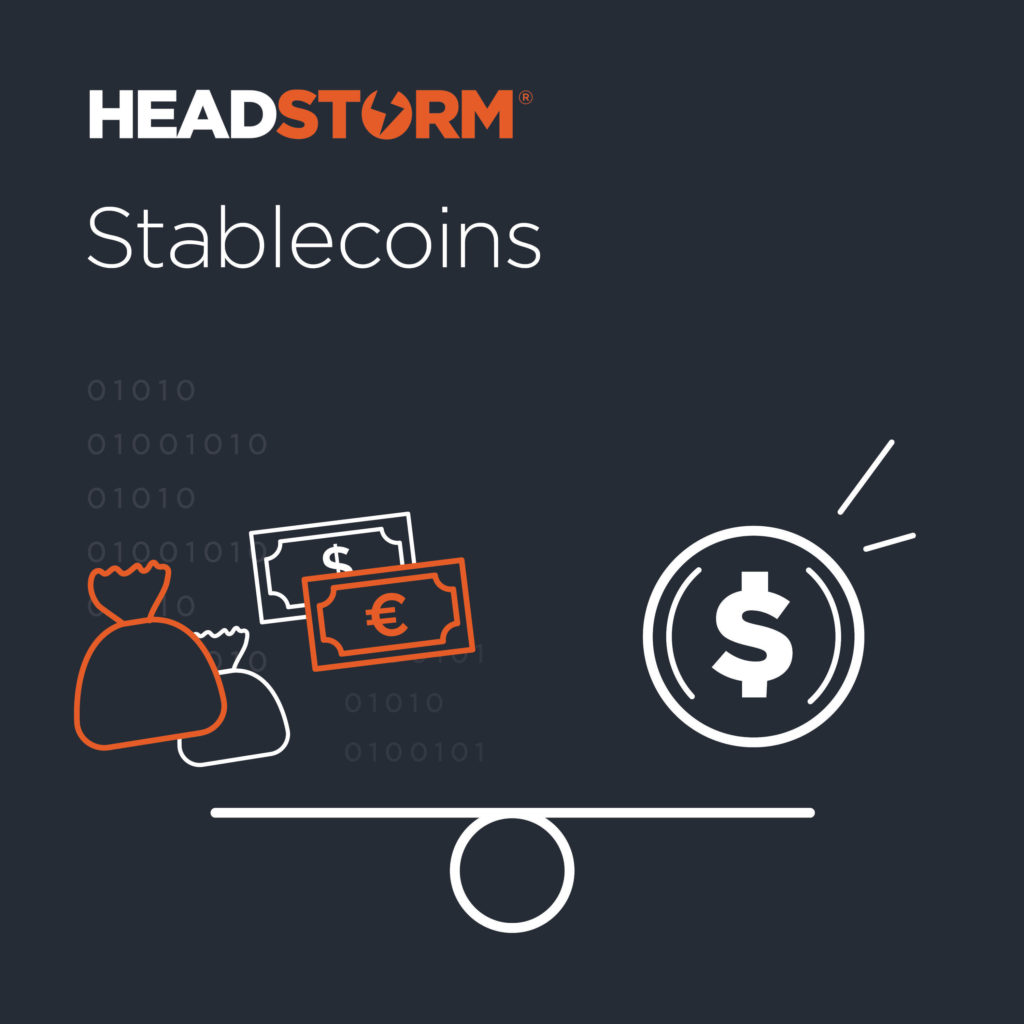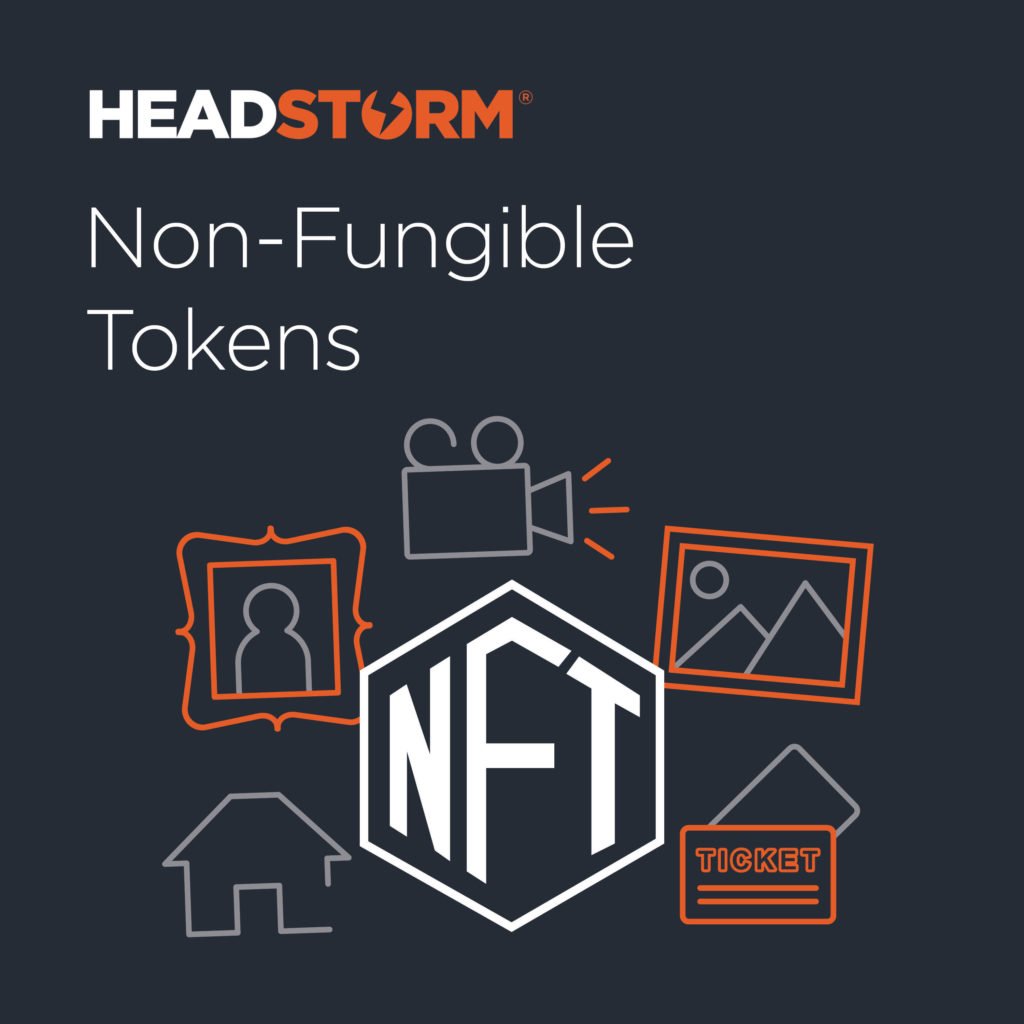Engineering Growth™
© 2024 Headstorm® LLC. – All Rights Reserved.
Headstorm is a registered trademark of Headstorm LLC.
Any unauthorized use is expressly prohibited.
Stay in the know.

In our previous article, “Descrambled: Blockchain Basics”, we explained the concept of cryptography without diving into the trillion-dollar market that is cryptocurrency. So, before you wrap your head around Decentralized Finance (DeFi), let’s settle on a working definition of cryptocurrency: it’s virtual money, managed on a blockchain.
Simple enough, yes? Great. So when we tell you there’s a trillion dollars of money sitting on blockchains in the form of cryptocurrency, the natural question might be: “hmm… I wonder if any of that money is being put to work?”
It sure is – but here’s the real kicker: the cryptocurrency investments & instruments space isn’t managed by traditional, centralized banking institutions… because of course, centralized authority is exactly the type of model blockchain is pushing back on. Instead, this $100B+ financial subsector runs on trustless blockchain algorithms known as protocols.
While 99% of the crypto spotlight was on Bitcoin, another protocol with grander plans flew under the finance radar. That protocol – Ethereum – introduced the “smart contract”: a transactional arrangement that auto-executes if its conditions are met. In the last article, we talked about blockchain serving as a sort of always-on escrow service; smart contracts capitalize on that trait to expand the realm of possibility.

Like many revolutionary technologies, it’s deceptively simple:
In traditional banking, when my bond matures, I need to mail it to the Treasury or walk into an institution to trade it for the cash value.
In a smart contract, when my bond matures, it knows it has matured and simply deposits the funds into my desired account. No middleman needed.
“No middleman needed” is, of course, the battle cry of digital transformation. ::the crowd goes wild:: As such, it shouldn’t be surprising to learn that Decentralized Finance protocols – despite being born virtually yesterday – are already deploying many of the advanced financial instruments that took decades to realize through traditional finance institutions.
A few examples:
DEXs (you guessed it, decentralized exchanges) allow parties to exchange one cryptocurrency for another. Nobody administers these exchanges – the smart contracts take care of everything.

While many deride Bitcoin as being useless for currency due to its wildly fluctuating value, stablecoins are cryptocurrencies pegged to a more stable value, like the US dollar. Typically, their algorithms simply mint and destroy supply as needed to ensure the currency’s value remains fixed.

One of DeFi’s major leaps was the introduction of Automated Market Makers (AMMs), which in combination with stablecoins, created a frenzy of opportunity wherein markets could be created out of thin air to support exotic trading and lending environments.

What arguably led industry insiders to dub mid-2020 as “DeFi Summer” was the latent opportunity to amass wild profits by executing the right combination of exchanging, trading, borrowing, lending and staking crypto across protocols. With some due diligence, investors were harvesting unheard-of APYs in the four and five-figure ranges.

Taking the uniqueness of blockchain to the next level, NFTs have emerged in mid-2021 as a huge market in and of themselves. NFTs at this stage are effectively virtual collectibles – intangible goods with unique identifiers, allowing the market to validate anything as a one-of-one or one-of-X item. A wide array of NFT projects have gained notoriety, from the NBA’s “Top Shot” marketplace of virtual trading cards to artist Damin Hirst’s hybrid piece, “The Currency.”

The pruning of middlemen is certainly a double-edged sword, made even more apparent in the very phrase “decentralized finance” — many of the blockchain-based technologies being deployed by traditional finance players today are just as much hedges against the threat of obsolescence as they are innovative streamlining processes. The FOMO among financial firms is very real here, and warranted.
21% of banks have incorporated blockchain tech in some form – including JPMorgan, Citi, Wells Fargo, US Bancorp, PNC, Fifth Third Bank, and Signature Bank. Some banks are experimenting with facilitating cryptocurrency transactions, while others are focused on tokenization. One of Thailand’s largest banks, Kasikornbank, has begun experimenting with DeFi services as part of its broader business expansion plan.
Where to allocate resources is the big question for these institutions, given the astronomical overnight growth rates and investor influx across various DeFi protocols. It’s not in the financial sector’s nature to chase short-term trends as evidence for new lines of business, but the scale of opportunity cost here is often enough to warrant standing up an entire division at a moment’s notice.
At Headstorm, this is a familiar situation to find our clients in. A need for speed-to-market, plus a lack of internal expert resources, equals us. If future-proofing your firm is an urgent consideration, we can start the discovery process to assess how your tech strategy aligns with the market’s forks in the road.
Learn how our suite of capabilities fuels business innovation
Talk to us about solving data-driven challenges with speed & scale
Dallas
15455 Dallas Pkwy, Ste 300
Addison, TX 75001
844-683-6880
Engineering Growth™
© 2024 Headstorm® LLC. – All Rights Reserved.
Headstorm is a registered trademark of Headstorm LLC.
Any unauthorized use is expressly prohibited.
Stay in the know.
This website uses cookies to ensure you get the best experience on our website. By continuing to use our site, you agree to the use of cookies. Read more about our privacy policy.